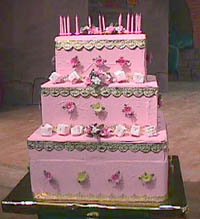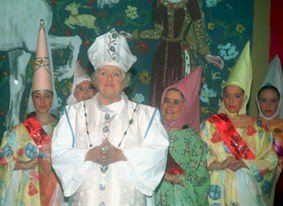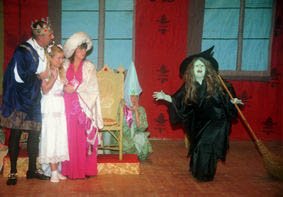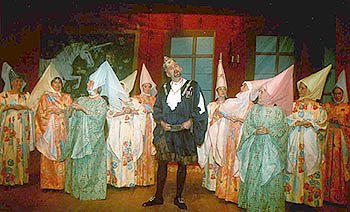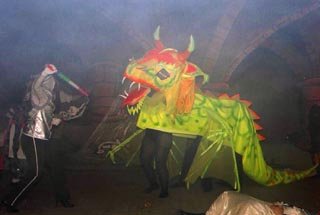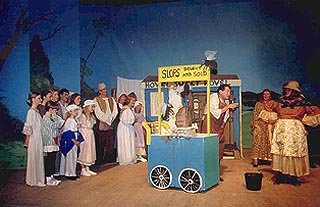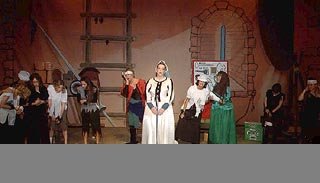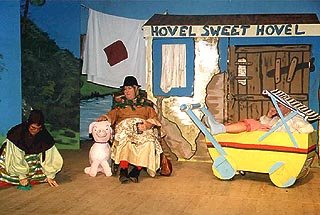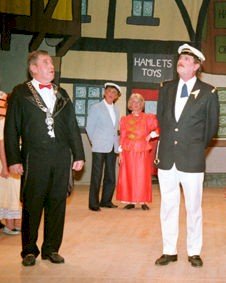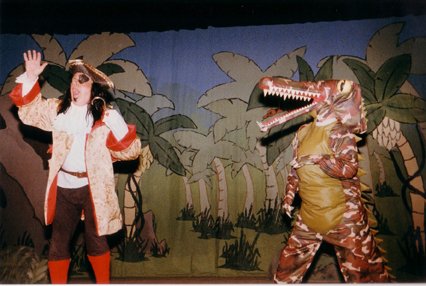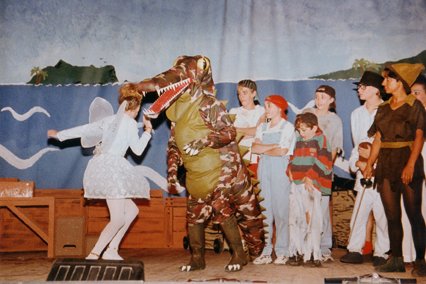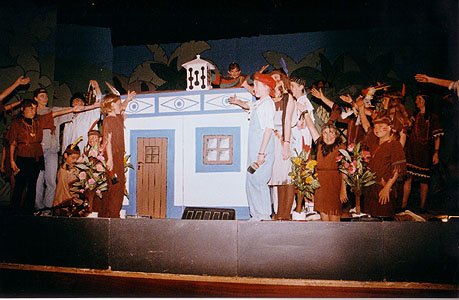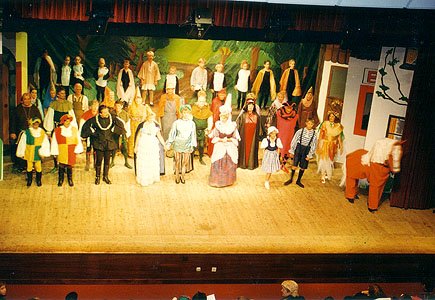THE ENGLISH PANTOMIME
Originally Italian, the play was performed unspoken with its principal characters of Harlequin, Columbine, Clown and Pantaloon. Harlequin and Columbine played the leading and more serious parts until the Clown began to take over and become the principal. As this art form evolved it borrowed transformation scenes from the French theatre. Eventually jugglers, conjurers and dancers were added, and it was at this stage of pantomime during the beginning of the 18th century that England finally accepted this way of performing as part of standard repertoire.
In the 1700s the Theatre Royal, Drury Lane, introduced its first pantomime “The Loves of Man and Venus”. This proved to be a great success and over the years transformation scenes were added to dumb action or mime. By 1750 it became so popular that the great clown Grimaldi dominated the pantomime scene.
Well into the 19th century speech accompanied by music was introduced. The nursery rhyme panto did not arrive until 1800, when Covent Garden presented “Harlequin and Mother Goose” or “The Golden Egg”. Towards the end of the 19th century, Music Hall began to dominate pantomime and vulgarized it. The music hall performers were more adult, and each performer had their particular and easily recognized kind of humor. Long acts were brought into the show and specialty acts took up much of the time. The fairy tale began to get lost and the fight for good and evil eventually vanished or had a token few lines at the end.
Today many theatres in Britain present their annual pantomime, whether it be a commercial one with big stars and vague story outline or traditional repertory panto faithfully following both story and tradition.
Pantomime, with all its audience participation, is a wonderful way to introduce children to the theatre and create a lifetime love of live entertainment.





